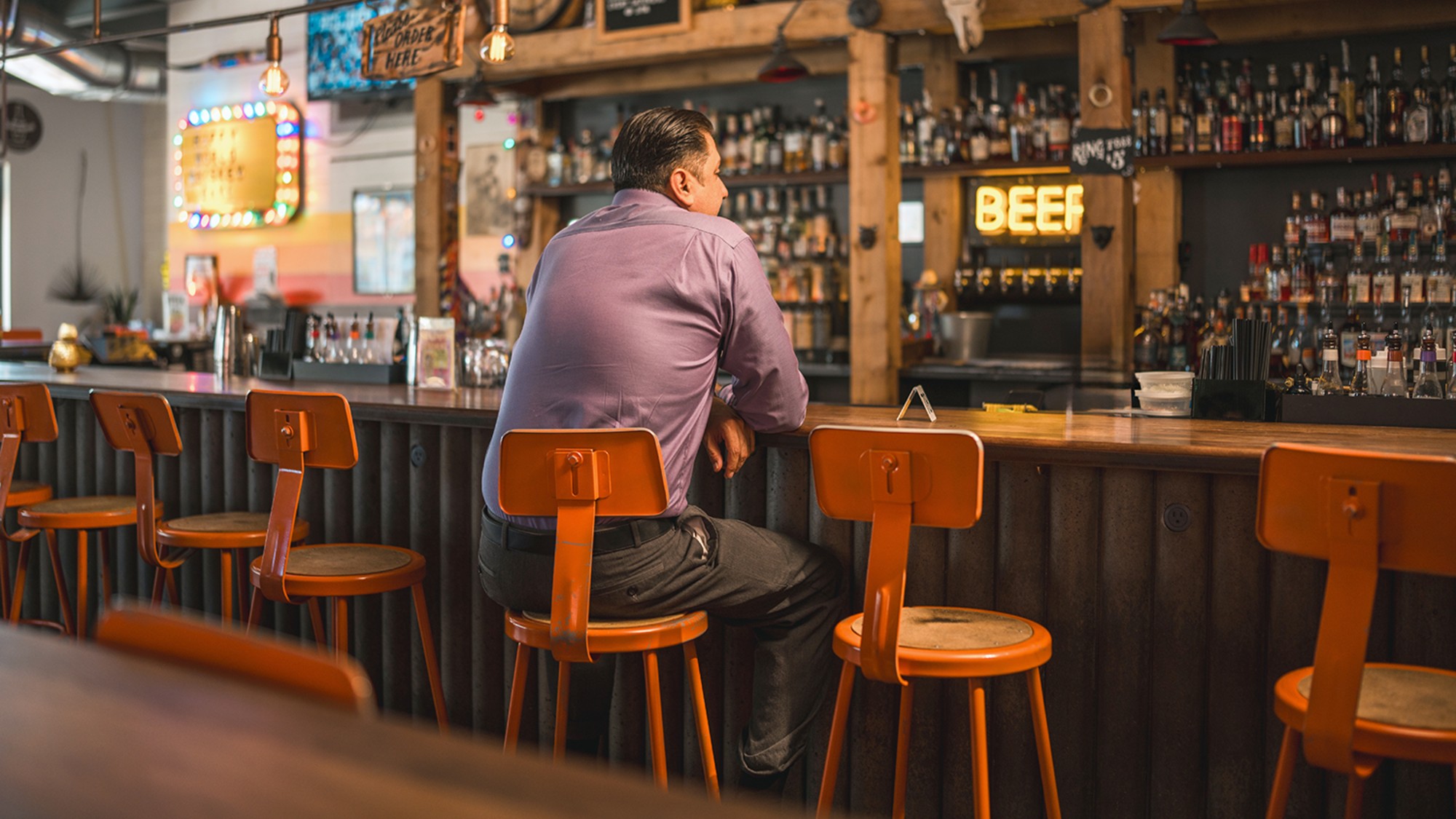Murder House Flip is the true crime renovation show America deserves
Yes, it's as ridiculous as it sounds


Murder House Flip is such an obvious idea for a show that — when I finally realized it wasn't a parody — I was stunned it hadn't been done before. The premise is exactly what it sounds like: Home renovators fix up houses where people were killed. "I'm all in," Stephen Colbert said, speaking for all of us on The Late Show in January. "I'll watch anything with 'murder house' in the title."
In execution — if you'll pardon the pun — Murder House Flip is the most American thing I can think of, right up there with baseball, apple pie, and asking to speak to the manager. It is exactly the right doses of tasteless and irresistible, of tacky and weirdly compelling, of attention-seeking and un-self-aware. It is also the perfect metaphor for our country, where a fresh coat of paint and a gazebo work as well as an exorcism.
To start, there's the show's format. Murder House Flip airs on Quibi, a new streaming service that launched Monday; the name is a portmanteau of the words "quick" and "bites," referring to the fact that its shows are no more than 10 minutes long per episode. (Frustratingly, they can also only be watched on your phone). It's exactly the sort of startup idea that is either dumb or genius, destined to be a Juicero-like punchline in nine months or as indispensable as TikTok; Engadget puts itself in the former camp, writing Monday "Quit trying to make Quibi happen." But, like many grand and potentially stupid ideas, it has also attracted mind-boggling amounts of funding from investors — in this case, $1 billion. And in America, that speaks, even if the whole service banks on the infinitesimally small attention spans of its audiences, with the shows being marketed as something you could stream in line at a "coffee shop," assuming you could actually go to coffee shops right now.
The Week
Escape your echo chamber. Get the facts behind the news, plus analysis from multiple perspectives.

Sign up for The Week's Free Newsletters
From our morning news briefing to a weekly Good News Newsletter, get the best of The Week delivered directly to your inbox.
From our morning news briefing to a weekly Good News Newsletter, get the best of The Week delivered directly to your inbox.
In addition to programs staring Nicole Riche, Sophie Turner, and Liam Hemsworth, Quibi's launch included three five-minute episodes of Murder House Flip; binged together, the 15-minute set tells one full renovation story. The premiere centers on the former Sacramento residence of Dorothea Puente, a "little old lady" who murdered seven tenants in her boarding house in the 1980s, buried their bodies in the backyard, and then continued to cash their Social Security checks until she was caught. The home's new owners, Tom and Barbara Holmes, bought the house in 2010 and told the MHF hosts, designers Joelle Uzyel and Mikel Welch, that "we need a miracle" and that it's "time to get rid of Dorothea."
If it weren't for the morbid circumstances, Murder House Flip would otherwise be a conventional home renovation show. Joelle and Mikel dutifully promise to help, and send the couple away for a few days while they do the renovation. Anonymous, burly construction workers are brought in to build frames and paint things. Joelle plays the part of "the squeamish one" — on HGTV, it might have been over something like a moldy basement, but here it's about possible DNA in the floorboards. Problems arise during construction and it seems almost as if the designers won't be able to pull it off, then, voilà, during the big reveal everything is Ikea-catalog-perfect. If it weren't for the literal murder, it would look like any of the other interchangeable, aspirational home ownership fantasy shows that helped earn HGTV its place as the fourth most-watched network in the country.
But as much as Murder House Flip follows the established playbook, it also reverses the underlying promise of every other real estate makeover show: That the perfect life begins with the perfect house (preferably one with an open-concept kitchen). While Property Brothers and House Hunters might sell you a vision of a future complete with a happy marriage, 2.5 children, and a golden retriever all by way of Target-sponsored light fixtures, Murder House Flip instead aims to wipe away the past. Here, a dismembered body can be forgotten by a strategically-placed swing set, and inlaying the mosaicked names of the (living) grandchildren in the patio over a former grave site doesn't strike anyone as an odd decision. After all, this is America, and there is nothing that can't be willed away by a visit to Restoration Hardware, nothing that can't be covered up by a swipe of modern beige paint.
There's a healthy bit of reality TV magic going on here, too. It takes only cursory Googling to find out more about Tom and Barbara Holmes, who haven't seemed so desperate to "get rid of Dorothea" in the past. In fact, their murder house has earned them plenty of evidently welcome press over the years; as Tom admitted to filmmaker Nick Coles in his short documentary The House Is Innocent, "I like the attention." Carefully removed from the Murder House Flip episode are Tom's signs to neighborhood gawkers with messages like, "It was that awful, awful woman that did it! Don't blame me!!" (The placard is signed "the house" — if these walls could talk, indeed.) Even the murderer herself, Dorothea Puente, milked her crimes for further attention and money, publishing a cookbook from prison titled Cooking With a Serial Killer. Now that's American hustle for you.
A free daily email with the biggest news stories of the day – and the best features from TheWeek.com
The most bewildering thing about Murder House Flip, though, is the show's total lack of self-awareness, the disinterest in probing its own premise any deeper. While the show is clearly intended to be slightly tasteless and provocative — if it weren't for those archival shots of detectives excavating bodies, it would frankly be quite boring — it is deafness to its own metaphor that makes Murder House Flip so very American. After all, there is nothing more patriotic than burying the unsavory histories of the places we live. It's part of why the five-minute runtime on Quibi is so important; it lets you almost excuse what would otherwise be a crass glossing-over of its own subject matter. In the first three episodes, Joelle and Mikel never acknowledge the absurdity of the fact that they're on a show literally called Murder House Flip — a grotesque Frankenstein's monster of Americans' two greatest interests — and they never grapple with the exploitation of the implied titular murdered.
The natural next step (and one not yet taken by the show, perhaps because it's too much of a downer for the coffee line) is to ask what makes a murder house so different than, well, any house anywhere. The news footage? The headlines? Because this entire country, lest we forget it, was founded on a different kind of grave site, a less Hollywood-worthy one: that of the indigenous peoples we stole it from, and the slaves who built it. As Colin Dickey illuminatingly writes in Ghostland: An American History in Haunted Places, "Americans live on haunted land because we have no other choice."
When other home renovation shows talk about good bones, they don't mean it quite as literally as Murder House Flip, of course. But the outcome is always the same anyway: to cover them back up.
Want more essential commentary and analysis like this delivered straight to your inbox? Sign up for The Week's "Today's best articles" newsletter here.
Jeva Lange was the executive editor at TheWeek.com. She formerly served as The Week's deputy editor and culture critic. She is also a contributor to Screen Slate, and her writing has appeared in The New York Daily News, The Awl, Vice, and Gothamist, among other publications. Jeva lives in New York City. Follow her on Twitter.
-
 Scoundrels, spies and squires in January TV
Scoundrels, spies and squires in January TVthe week recommends This month’s new releases include ‘The Pitt,’ ‘Industry,’ ‘Ponies’ and ‘A Knight of the Seven Kingdoms’
-
 Venezuela: The ‘Donroe doctrine’ takes shape
Venezuela: The ‘Donroe doctrine’ takes shapeFeature President Trump wants to impose “American dominance”
-
 Giving up the booze
Giving up the boozeFeature Sobriety is not good for the alcohol industry.
